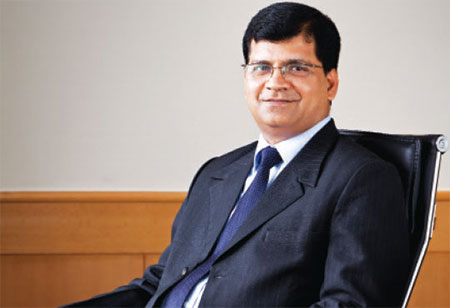Evolution of Procurement Function
By Karuna Pande, Director Supply Chain, SABMiller India

Karuna Pande, Director Supply Chain, SABMiller India
Organizations are increasingly confronted with greater global competition, changing markets & business models, cost reduction pressure, price volatility and scarcity of raw materials. They respond to these challenges by reducing their cost base, exploring new markets or partnerships, introducing new products and services to the market, and redesigning the organizational structure. Procurement function is in the vanguard of this.
Procurement function has come a long way from being seen as a mere clerical function expected to change a requisition into a purchase order into strategic function with significant potential for delivering competitive advantage or cost savings and thus acquiring a seat on the high table. However tracking and aligning procurement performance and ensuring its impact on company’s topline is becoming difficult due to the growing complexity of supply chains.
Traditionally it was perceived that procurement meant negotiation. However it has changed now – it also includes amongst others sophisticated spend analyses & simulations using advanced technological tools, risk management, supplier performance management (SPM), project management and corporate social responsibility (CSR). Also, the focus is spreading equally to indirect spend as much on direct spend; with better insights from spend analytics. Even where traditionally the “experts” were handing the sourcing themselves like in Information Systems and Legal / Insurance Services, Procurement has become assertive and assumed the leadership role while still banking on the expertise of the experts.
Few emerging trends are focus on supplier performance management and better working capital management. It is not just measuring past supplier performance alone but predicting future supplier performance. While it has been pretty subjective in the past, with increasing availability of better tools and practices one is able to predict future performance more scientifically and indeed calculate probabilities of success. Similarly with innovative financing tools and creative solution, the working capital and cash-flow management is being improved by firms by having favorable payment terms and Vendor Managed Inventory (VMI).
In this journey all transactional aspects of procurement are increasingly outsourced while only the strategic aspects are insourced. Besides, a global or cohesive centralized structure is the current norm in response to the needs of the function. In many instances it is floated as a separate entity or subsidiary to optimize the tax and legal structure.
With constant need to grow in which cutting costs sustainably is a big component, firms are adopting innovative practices in procurement. The widely used closed-loop cost management is an example. It entails six steps viz., Visibility – provide transparency to “who-spends-how-much-on-what” through transactional data analysis. Value Targeting – Define expense policies and procurement initiatives to reduce both consumption and price; Category Ownership – Create an accountability matrix to guide dual ownership of every expense; Zero-based Budgeting (ZBB) – Budget from zero annually to expose and remove unproductive expenses; Procurement Execution – Execute strategic sourcing events and execute buying operations to realize price reductions with suppliers; Control & Monitoring – Monthly review to identify budget variances, owners responsible, and action plans to resolve them.
To predict the broad trends that are emerging and what would shape the Procurement Function of the medium-term future is onerous. However, here are the few we could.
1. Shift from large, discrete, enterprise-level procurement organizations to loose networks of supplier-facing professionals embedded into strategic business units.
2. In the new Supply Management order, many current sourcing activities will be outsourced. The in-house procurement function will have the strategic scope widen – it will become linked to financial supply chains, optimizing cash flow and working capital, implementing dynamic discounting and supply-chain financing.
3. New era of instantaneous business intelligence - Big-data analysis will make market pricing for goods and services more transparent via e-sourcing, global trading networks, online communities. Risk will be measured via standardized, readily available third-party information via networked communities where people pool data for operational risk assessment. Ability to produce data predicting future trends more accurately is imminent.
4. Collaboration will be the new normal with the dawn of the extended enterprise. Suppliers may be asked to contribute ideas to existing designs, or to help fix existing processes. They may spend more time on the shop floor with lines between suppliers and buyers blurring. As we move into “integrated supplier networks”, we may incorporate both gain and risk sharing into the commercial relationship with suppliers.
5. Risk management will become more important than it is today with many convergent trends like supply networks becoming globalized, culturally different companies stepping onto the global playing field, etc., This will increase firms’ awareness of supply risk and their perception of where risk lie.
6. As a consequence, procurement skills will need to change and cope as well – professionals must become experts, be respected, influential, persuasive, visionary, strategic, business-savvy.
Here is wishing all procurement professional a happy and successful evolution as much it is for the function.




